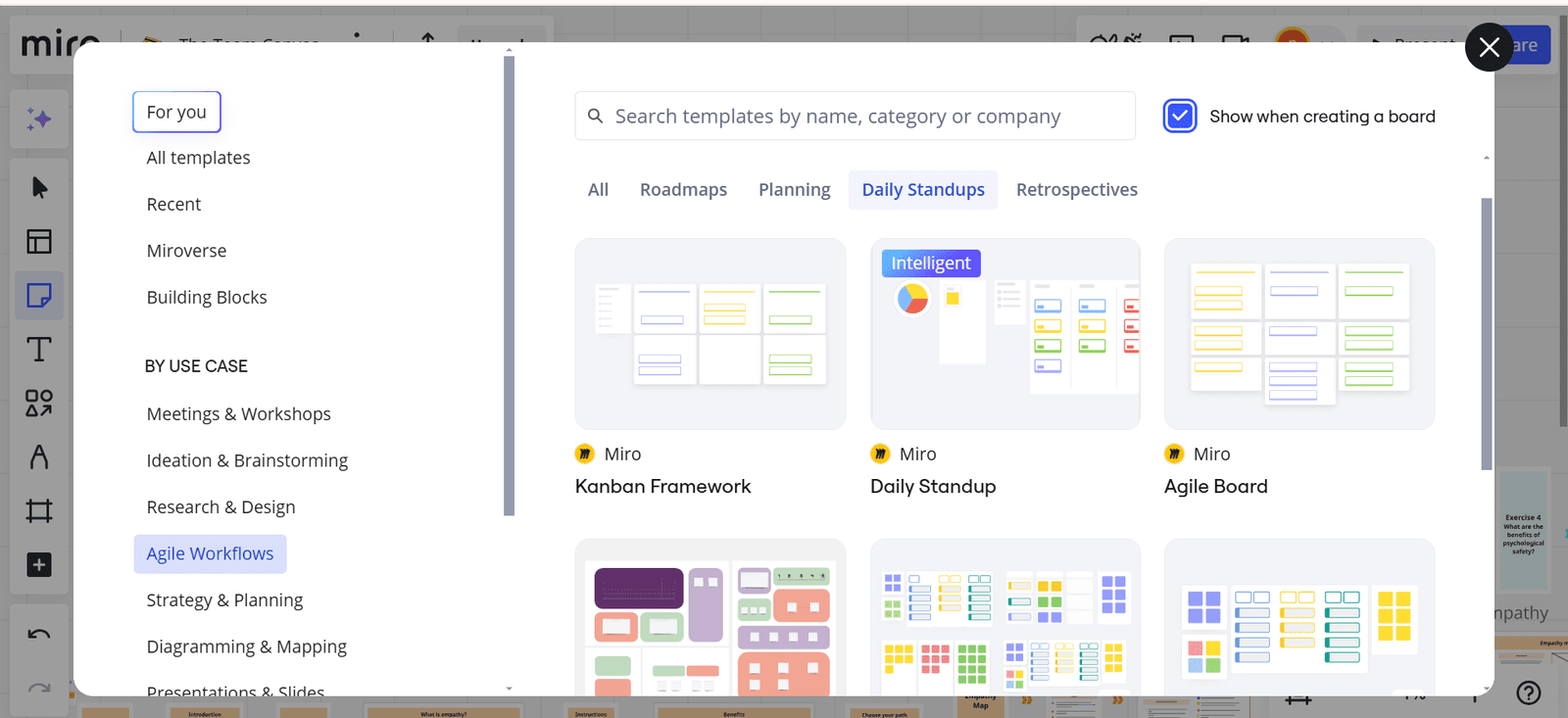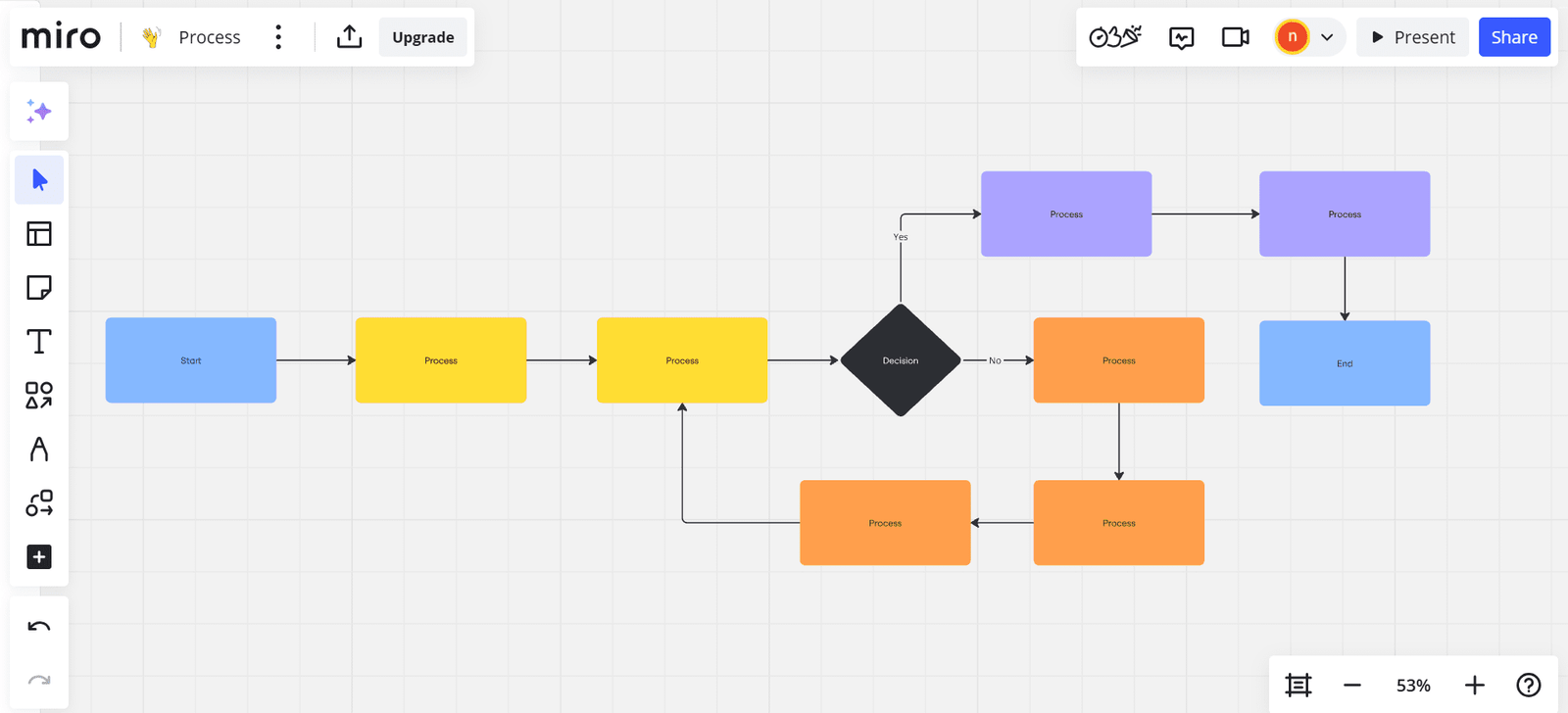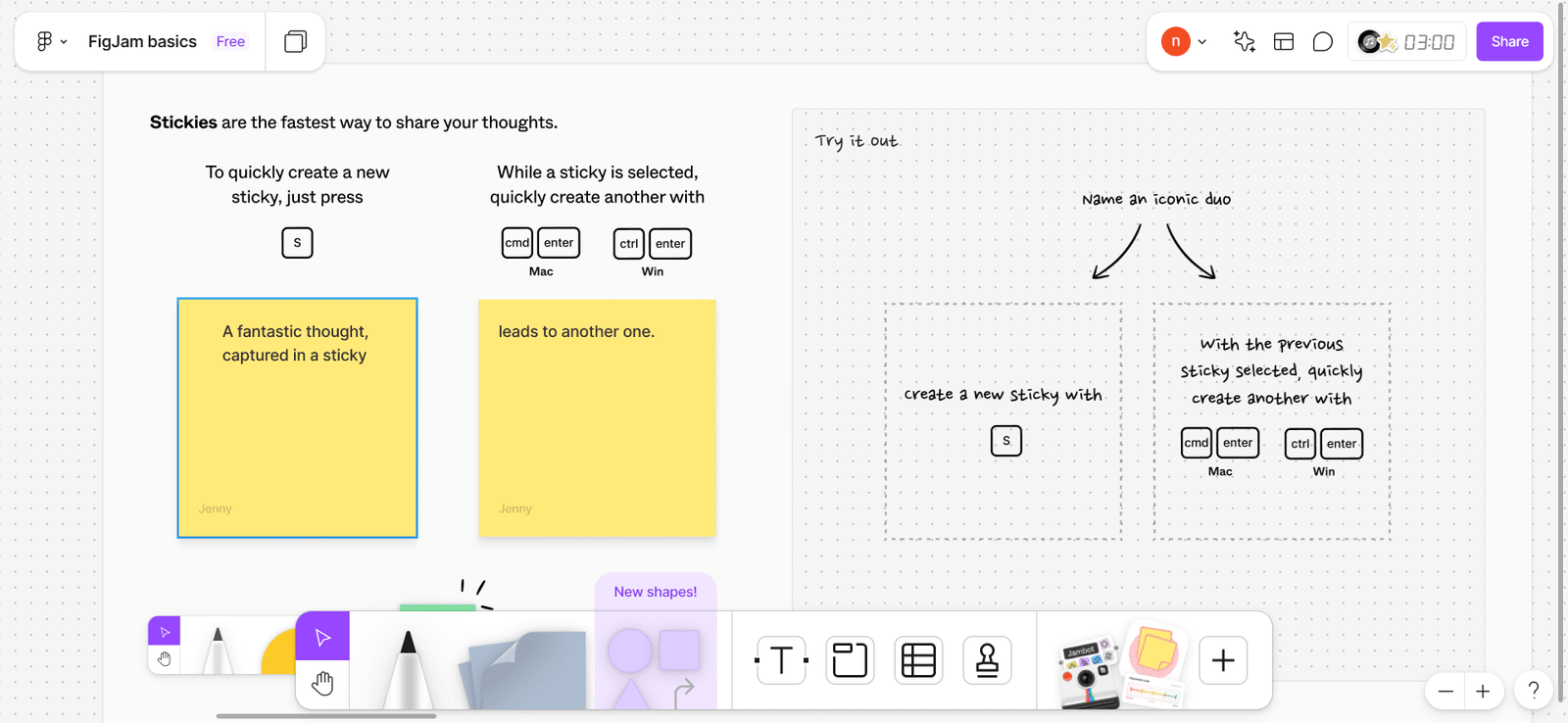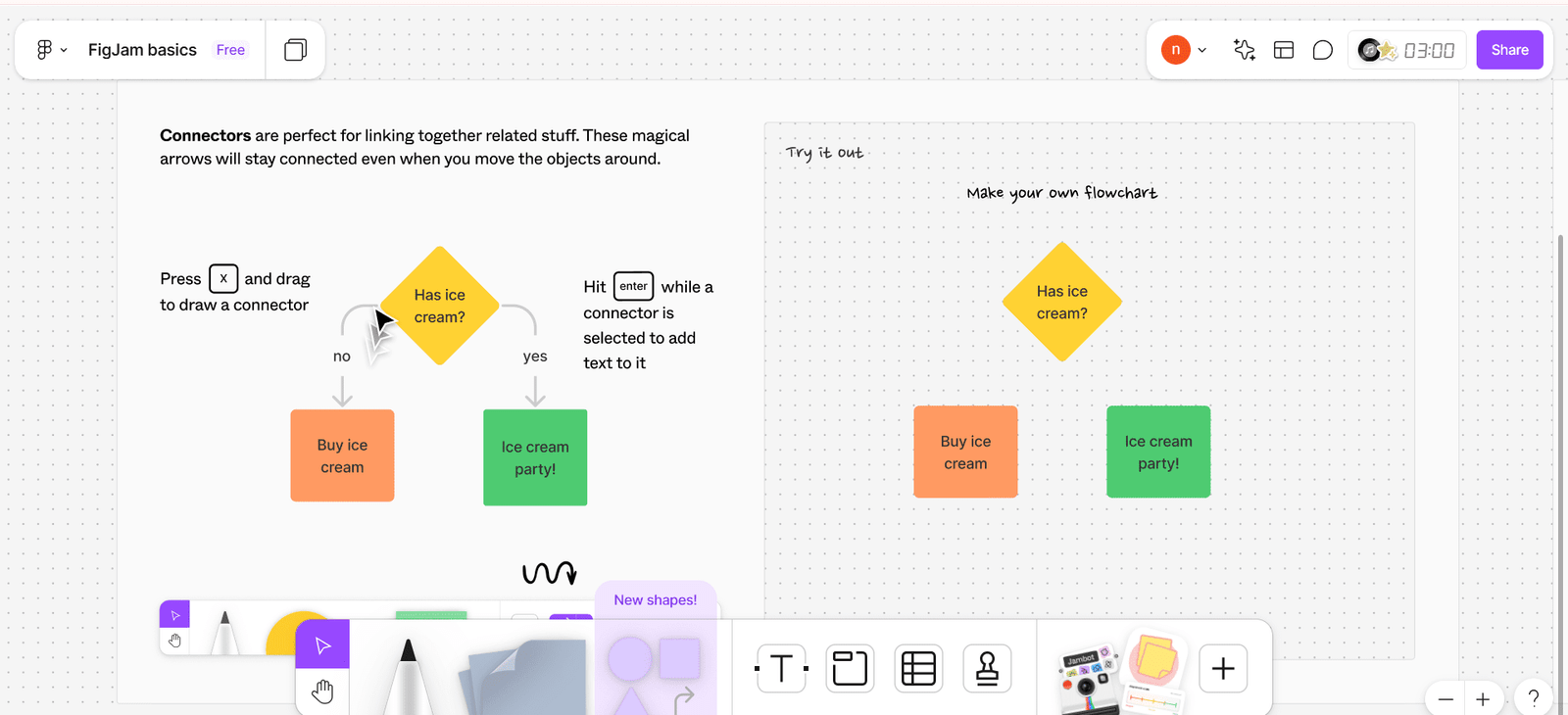
In today’s fast-paced work environment, digital whiteboards have become essential for teams looking to collaborate, brainstorm, and plan visually. Two of the most popular options—Miro and FigJam—offer powerful features but cater to different needs.
Miro is a feature-rich, highly customizable platform ideal for complex workflows and cross-functional teams, while FigJam is a lightweight, design-friendly tool seamlessly integrated with Figma, perfect for creative brainstorming.
But how do they truly compare? Whether you need advanced collaboration and workflow planning or a simple, design-focused brainstorming space, understanding their strengths and limitations will help you choose the right tool for your team. Let’s dive into their key features, differences, and best use cases.
What is Miro?
Miro is an online collaborative whiteboard tool designed for brainstorming, mind mapping, and project planning. It provides a flexible canvas for teams to visualize ideas and workflows.

Why Teams Love Miro
- Infinite Canvas: Plan projects, brainstorm, and create workflows freely with no space limitations.
- Ready-to-Use Templates: Use or customize templates for mind maps, Kanban boards, flowcharts, and more.
- Easy Visual Planning: Drag-and-drop tools like sticky notes, diagrams, and connectors simplify complex idea organization.



What is FigJam?
FigJam is a digital whiteboard tool created by Figma for brainstorming, team discussions, and idea-sharing. It’s designed to be simple, fun, and interactive—great for quick collaboration.

Key Features of FigJam
- Collaborative Whiteboard: Interactive canvas with drawing tools, sticky notes, and more for team collaboration.
- Sticky Notes & Text: Drag-and-drop notes that can be color-coded for sorting and brainstorming.
- Connectors & Diagrams: Create mind maps and workflows using smart connectors and pre-made shapes.



Did You Know? Digital whiteboards can increase the speed of ideation, contributing to more successful project completions.
Key Differences Between Miro and FigJam
| Feature | Miro | FigJam |
|---|---|---|
| Functionality | Advanced workflows, enterprise-ready tools, integration-rich | Simple whiteboarding, ideal for creative and design work |
| User Base | Cross-functional teams, project managers | Design teams and Figma users |
| Learning Curve | Steeper due to extensive features | Beginner-friendly and easy to use |

When to Choose Miro
- Complex projects requiring advanced collaboration tools
- Cross-functional teams beyond just design
- Detailed planning with large data sets

When to Choose FigJam
- Quick brainstorming sessions in creative teams
- Seamless workflow with Figma
- Simple, no-fuss collaboration needs
How FigJam and Miro Compare
- Integration: FigJam integrates with Figma, while Miro integrates with tools like Jira, Asana, Slack, and more.
- Templates: Miro has a larger built-in template library; FigJam lets users create and share community templates.
- Workflow: Miro supports full innovation cycles; FigJam keeps workflows light and design-focused.
- Visual Elements: Images, icons, illustrations, videos
- Text: Sticky notes, text boxes, comments, reactions
- Shapes: Arrows, connectors, flowchart tools
- Real-Time Collaboration: Live editing, cursor tracking, chat
Conclusion: Which One Is Right for You?
If you need a powerful, all-in-one whiteboard for diverse teams and complex projects, Miro is the better choice. It offers advanced collaboration, integrations, and customization—ideal for businesses and project managers.
On the other hand, if you’re looking for a simple, design-friendly whiteboarding tool with seamless Figma integration, FigJam is the way to go. It’s perfect for design teams and quick idea-sharing sessions.
Summary:
- For deep workflow integration & enterprise-level planning → Choose Miro
- For lightweight, design-focused brainstorming within Figma → Choose FigJam
References
- References (screenshots) taken from https://www.miro.com
- References (screenshots) taken from https://www.figma.com/figjam/
